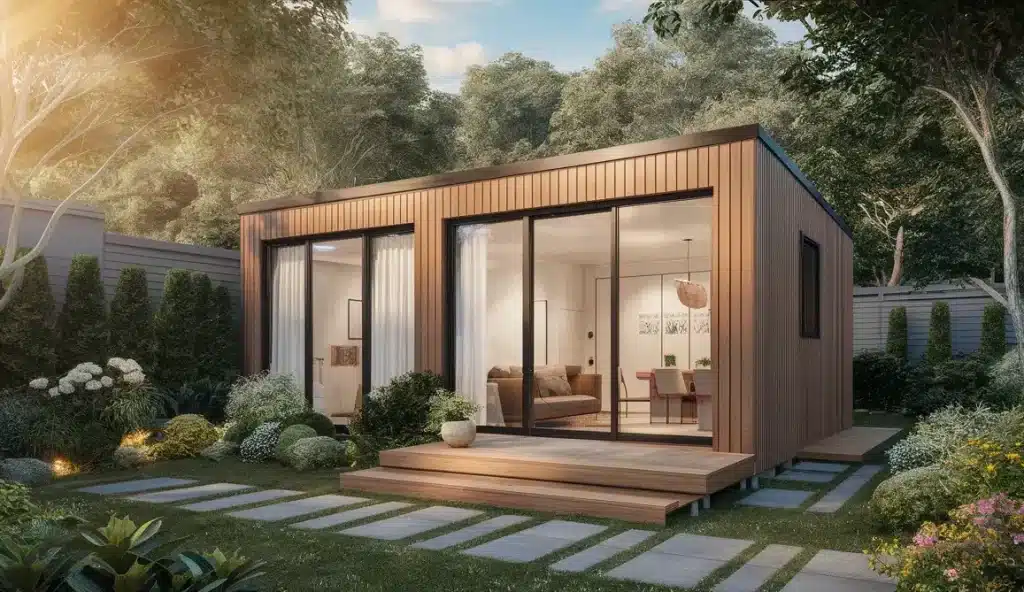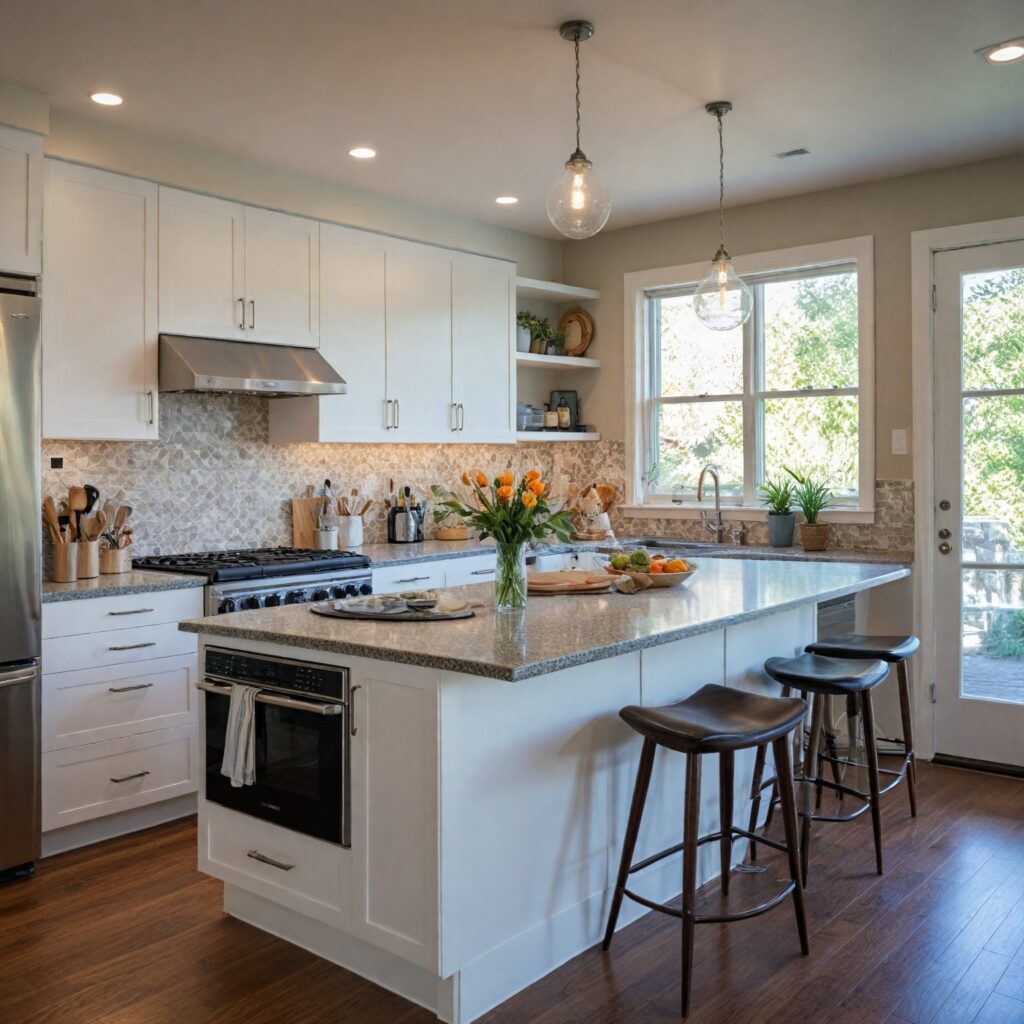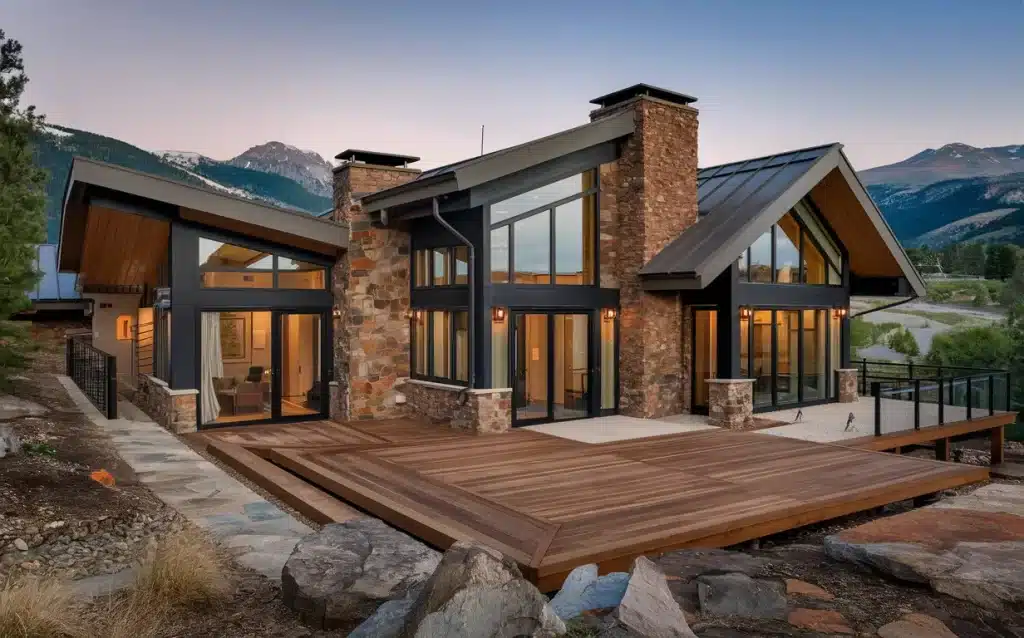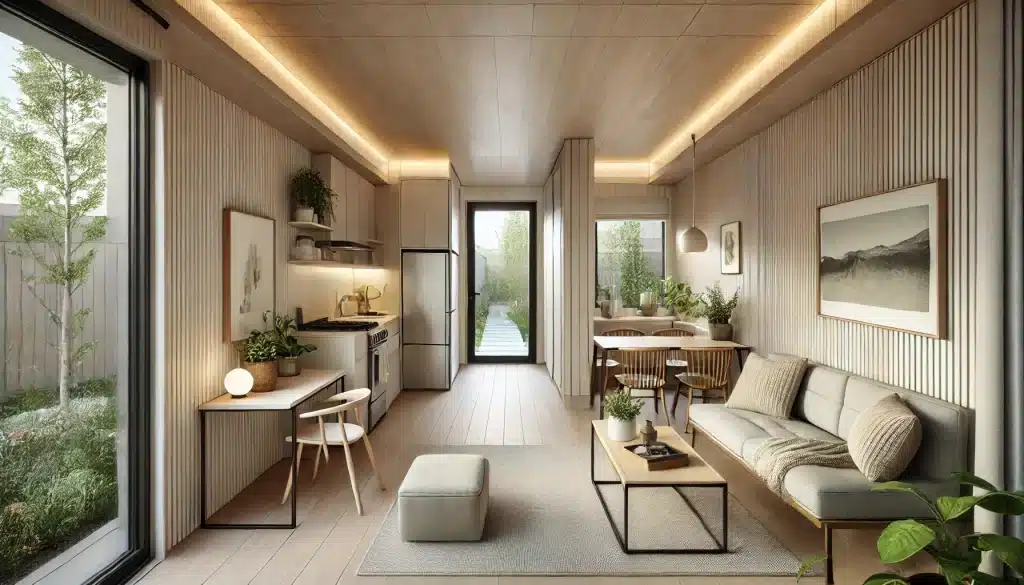1. Introduction
As the housing market continues to tighten, ADUs in Los Angeles have emerged as a brilliant solution for homeowners seeking to maximize their property’s value. The rising popularity of ADUs in Los Angeles stems from their versatility and potential to create extra living space for family or rental income. Whether you’re exploring ADUs in Los Angeles to address the city’s housing shortage or simply to build a dream space, this guide will walk you through everything you need to know about constructing one.
In this comprehensive guide, we’ll explore everything you need to know about ADUs in Los Angeles. We’ll cover what they are, why they’re so popular, and how Nashta Construction can help you build your own ADU—from design to construction and everything in between.

2. What is an ADU?
ADUs in Los Angeles are fully functional housing units built on the same lot as the primary home. These ADUs in Los Angeles can serve multiple purposes—from providing housing for relatives to offering a separate rental space. As more homeowners become aware of the benefits, ADUs in Los Angeles continue to grow in demand.
Some common terms for ADUs include:
- Granny Flats
- Backyard Cottages
- In-Law Suites
- Secondary Suites
ADUs are designed to serve as independent living spaces, making them highly versatile for homeowners in Los Angeles who want to make the most of their land. These units are ideal for housing extended family members, creating a rental unit for additional income, or even establishing a home office or studio.

3. Types of ADUs
When considering building an ADU, you have several design options depending on your property size and goals. The most common types of ADUs include:
- Detached ADU: A stand-alone structure separate from the main house. This offers more privacy and flexibility in design but typically requires more space.
- Attached ADU: An extension of the main home, sharing a wall with the existing structure. This is ideal if space is limited and can offer a more affordable solution compared to a detached ADU.
- Garage Conversion ADU: Many homeowners choose to convert their existing garage into an ADU. It’s a cost-effective option that repurposes an underutilized space while providing a fully functional dwelling.
- Junior ADU (JADU): A smaller unit, typically less than 500 square feet, often created within the primary home by repurposing an existing bedroom or basement.
Each type of ADU has unique benefits, depending on your property size, budget, and intended use.

4. Why ADUs Are Popular in Los Angeles
Los Angeles, like many other cities in California, is facing an affordable housing crisis. As property values soar and rental prices increase, the demand for additional, affordable housing options has risen sharply. ADUs have emerged as a practical solution to these issues. Here’s why ADUs have gained such popularity in LA:
- Affordable Housing Crisis: With the median rent and home prices continuing to climb, building an ADU provides a more accessible and affordable way for people to live in the city.
- Income Potential: Homeowners can rent out their ADUs, generating passive income to help offset their mortgage or other expenses. In a rental market like Los Angeles, this can be a significant financial benefit.
- Flexible Living Arrangements: Many families are choosing ADUs as a way to house elderly parents or adult children who need more affordable living options but want to remain close to home. Multigenerational living has grown in popularity, and ADUs offer a perfect solution.
- Property Value Increase: Adding an ADU can significantly boost the value of your home. With the right design and planning, an ADU can be a long-term investment that pays off when it’s time to sell the property.
ADUs are a win-win for homeowners looking for flexibility, additional income, and smart investment options.
5. ADU Laws and Regulations in Los Angeles
Building ADUs in Los Angeles requires following specific regulations to ensure they meet the city’s zoning laws. Understanding the requirements and restrictions for ADUs in Los Angeles is crucial, as zoning, size, and permit considerations vary across neighborhoods.
Here are some key ADU regulations in Los Angeles:
- Zoning Requirements: ADUs can be built on most residentially zoned lots, but there are specific size, height, and setback restrictions depending on the zone. Most residential zones allow for detached ADUs up to 1,200 square feet.
- Size Limitations: The maximum allowable size for a detached ADU is 1,200 square feet, while attached ADUs are limited to 50% of the size of the primary residence.
- Parking Requirements: While parking requirements for ADUs have been relaxed, especially near public transportation, some properties may still require additional parking spaces for ADU residents.
- Permitting Process: Before building an ADU, homeowners must obtain permits from the Los Angeles Department of Building and Safety (LADBS). This includes submitting architectural plans and ensuring compliance with city building codes.
- Utility Connections: ADUs must have separate utility hookups for water, gas, and electricity. Some ADU designs may also require additional sewer connections.
For a full breakdown of Los Angeles ADU regulations, visit the official City of Los Angeles ADU Ordinance page.

6. The Benefits of Building an ADU
Building an ADU in Los Angeles comes with numerous advantages, making it a valuable investment for homeowners. Here are some key benefits:
- Increased Property Value: Adding an ADU to your property can significantly increase its market value. In areas like Los Angeles, where space is limited, the demand for homes with ADUs is on the rise.
- Rental Income: Renting out an ADU can provide a steady source of passive income. With high rental demand in LA, homeowners can see significant financial returns by leasing out their ADUs to tenants.
- Housing Flexibility: ADUs offer a flexible living arrangement. Whether it’s used for extended family, guests, or even as a personal retreat, ADUs provide a functional and adaptable space that meets various needs.
- Sustainability: Many ADUs are designed with energy efficiency in mind. By incorporating solar panels, energy-efficient appliances, and eco-friendly materials, homeowners can reduce their environmental footprint while saving on utility costs.
For a more in-depth exploration of the benefits of ADUs, you can read this ADU Financial Benefits Guide.

7. How Nashta Construction Can Help Build Your ADU
Building an ADU requires careful planning, design, and execution to ensure it meets all legal requirements while delivering the desired outcome. At Nashta Construction, we specialize in creating high-quality, custom-built ADUs that align with your goals and enhance your property’s value.
Here’s how we can help:
- Custom Design Services: Our team of architects and designers works closely with you to create an ADU that complements your main home and maximizes available space. Whether you’re interested in a modern minimalist design or a cozy cottage look, we bring your vision to life.
- Handling Permits and Regulations: Navigating the permitting process in Los Angeles can be complex, but our experts take care of everything—from zoning research to submitting the necessary paperwork to the city. We ensure your ADU complies with all local regulations.
- Turnkey Construction Solutions: Once the design and permits are approved, Nashta Construction handles all aspects of construction. We pride ourselves on delivering high-quality craftsmanship, using the best materials and construction techniques to ensure your ADU is durable, functional, and aesthetically pleasing.
- On-Time, On-Budget Delivery: With our extensive experience in ADU construction, we ensure your project is completed on time and within your budget. We offer transparent pricing and keep you informed throughout the entire process.
With Nashta Construction, you’re not just getting a building contractor—you’re getting a dedicated partner committed to making your ADU project a success. Learn more about our services here.
8. The Cost of Building an ADU in Los Angeles
The cost of building an ADU varies depending on several factors, including size, design complexity, and material choices. In Los Angeles
, ADU construction typically ranges from $150,000 to $400,000. Below are some factors that contribute to the overall cost:
- Permits and Fees: Depending on the size and type of ADU, permits can cost between $2,000 and $8,000. This includes building permits, utility connections, and other city fees.
- Construction Materials: The cost of materials like lumber, concrete, and steel can fluctuate based on market conditions. Choosing high-quality, durable materials may increase the cost but ensure longevity and lower future maintenance needs.
- Labor Costs: Hiring experienced contractors and skilled labor is essential for ensuring your ADU is built to code and to the highest standards. Labor typically accounts for a significant portion of the total cost.
- Utilities and Site Preparation: If your property requires significant excavation, grading, or utility upgrades, these can add to the overall expense.
For a detailed cost estimate, including labor, materials, and permits, Nashta Construction offers a free ADU cost consultation.
9. Financing Your ADU
While building an ADU can be a significant financial investment, there are various financing options available to help make the process more affordable:
- Home Equity Loans: Many homeowners use a home equity loan or line of credit (HELOC) to fund their ADU project. These loans allow you to borrow against the equity you’ve built in your home.
- Construction Loans: Some banks offer specialized construction loans designed for building ADUs. These loans provide funds in stages as the construction progresses.
- Government Grants and Programs: Los Angeles offers several programs designed to incentivize the construction of ADUs. For example, the LA County Homeowner Assistance Program provides low-interest loans to help homeowners finance ADU construction.
- Personal Loans: If you have good credit, a personal loan might be a flexible option for financing your ADU.
Each financing option has its benefits and considerations. It’s essential to evaluate the best option based on your financial situation and the scope of your ADU project.
For more detailed information on ADU financing options, visit this guide on ADU financing.
10. Step-by-Step ADU Construction Process
Building an ADU involves multiple phases, from initial planning to final inspection. Here’s a step-by-step overview of the typical ADU construction process:
- Consultation and Site Assessment: Start by consulting with Nashta Construction to assess your property and determine the best ADU type for your needs. We will also discuss your design preferences, budget, and timeline.
- Design and Planning: Our team works with you to create a custom ADU design that suits your goals. We’ll handle architectural drawings, engineering, and ensure the design meets all city regulations.
- Permit Submission and Approval: We take care of submitting the plans to the Los Angeles Department of Building and Safety (LADBS) for review and approval. This step includes obtaining necessary building permits and ensuring compliance with zoning regulations.
- Site Preparation and Foundation Work: Once permits are approved, construction begins. This phase includes preparing the site, laying the foundation, and ensuring proper utility connections for water, gas, and electricity.
- Framing and Structural Work: After the foundation is in place, the ADU’s frame is built. This includes walls, roof, and floors.
- Plumbing, Electrical, and Insulation: Our team installs all essential systems, including plumbing, electrical, and HVAC. Proper insulation ensures the ADU is energy-efficient.
- Interior Finishes: Once the structure is in place, we add interior finishes like drywall, flooring, kitchen fixtures, and bathroom installations.
- Final Inspection and Approval: After construction is complete, we schedule a final inspection with the city to ensure the ADU meets all building codes. Once approved, your ADU is ready for use!
This entire process typically takes between 6 to 12 months, depending on the complexity of the build and city permitting timelines.
11. ADU Design Ideas and Inspirations
The design of your ADU plays a crucial role in its functionality and aesthetic appeal. Depending on how you intend to use your ADU, there are several design trends and ideas to consider:
- Modern Minimalism: A minimalist design features clean lines, open spaces, and neutral color palettes. This style is ideal for those who prefer a clutter-free, streamlined living environment. Large windows and natural light are often key elements, creating a sense of spaciousness even in smaller ADUs.
- Tiny House Living: For those looking to make the most of limited space, tiny house designs offer innovative solutions. Lofted sleeping areas, multipurpose furniture, and built-in storage help maximize usable space. These designs are great for homeowners who want a compact yet functional living area.
- Eco-Friendly Designs: As sustainability becomes increasingly important, many homeowners opt for green ADU designs. This can include solar panels, energy-efficient windows and insulation, and water-saving appliances. Incorporating natural materials like wood and stone can also enhance the eco-friendly feel of your ADU.
Each design has its own charm and benefits, depending on the purpose of your ADU. At Nashta Construction, we specialize in helping clients bring their design visions to life, ensuring both functionality and beauty. If you’re looking for inspiration, our team can guide you through various styles to match your needs.

12. ADU Maintenance and Longevity
After your ADU is built, maintaining it is essential to ensure its longevity and continued functionality. Regular maintenance helps prevent costly repairs down the line and keeps your property looking its best.
Here are a few essential maintenance tasks for ADUs:
- Roof Inspections: Regular roof inspections can help identify and fix small leaks or damages before they become significant issues.
- Plumbing and Electrical Checks: Make sure all plumbing and electrical systems are functioning properly. Leaks or faulty wiring can lead to bigger problems if not addressed early.
- Exterior Upkeep: Keep the exterior of the ADU in good condition by checking for cracks, repainting, and maintaining any landscaping. Regular cleaning of gutters and downspouts also ensures proper drainage and prevents water damage.
- HVAC and Appliances: Routine maintenance of the HVAC system and appliances ensures they are operating efficiently and prolongs their lifespan.
Nashta Construction provides ongoing support even after the ADU is complete, offering maintenance services to keep your new unit in top condition.
13. Frequently Asked Questions About ADUs
The typical timeline for building an ADU, from the initial consultation to completion, ranges from 6 to 12 months. This includes design, permitting, and construction phases.
The cost can vary depending on size, materials, and complexity, but most ADUs in Los Angeles cost between $150,000 and $400,000.
Yes, ADUs are frequently rented out to generate income, and Los Angeles allows homeowners to lease their ADUs as long as they comply with local regulations.
Detached ADUs can be up to 1,200 square feet, while attached ADUs are generally limited to 50% of the size of the primary residence.
Yes, ADUs require separate connections for utilities such as water, gas, and electricity.
14. Conclusion
If you’re thinking about investing in ADUs in Los Angeles, now is the perfect time to make that dream a reality. Whether for rental income, extra family space, or increasing property value, ADUs in Los Angeles offer a flexible, smart solution for homeowners.
Ready to start your ADU project? Contact Nashta Construction today to schedule a consultation and begin planning your custom ADU.

